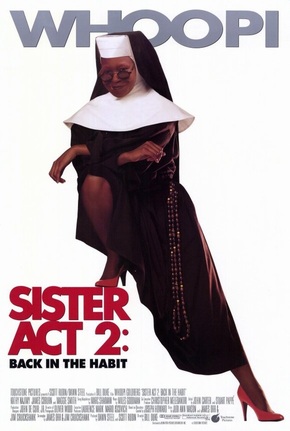 Original official movie poster
Original official movie poster An Extended Vocabulary
Thanks to this film, I had an impressive vocabulary at age 8. I picked up all kinds of stuff from scenes with the Afro-centric Ahmal (Ryan Toby), dorky Tyler Chase (Christian Fitzharris) and Delores Van Cartier, A.K.A. Sister Mary Clarence (Goldberg). I told my mother we didn’t have to buy tissue anymore if we put in a bidet, a toilet basin used to clean your privates after you’ve used the restroom (Mary Clarence funnily assumes the nuns got her one to snazzy-up her humble quarters). I often told my brother to extricate himself expeditiously from my room (Tyler:" the question at hand is how do we get this nun to extricate herself from us quickly and expeditiously?"). I learned the definition and proper pronunciation of anecdote (Rita: “I'm sorry I don't have any cute stories or antidotes to tell you.” Ahmal: “Anec, anecdote.” Rita: “Ahmal, shut up, mind your business”) and realized the meaning of the tabloid title, National Enquirer (Sketch: “Sister Mary Clarence said you quit the choir.” Maria: “Inquiring minds want to know”). The teens were in a music class, but there was science and multicultural studies involved: “fusion” was applied to glue Mary Clarence to her chair and Ahmal described his parents as “assimilationist” for giving him the more American name of Wesley vs. an African one like Ahmal. I don’t think my mom expected me to learn about human reproduction: Maria’s messed up mascara reminded Ahmal of the Mangbetu tribe’s ‘signs of fertility.’ There was also a tidbit of criminology. Mary Clarence berates the students for conceding to their cold feet before a live performance, saying “That's ya’ll’s M.O. See, that's how y'all operate—Ooh, something new; better run away." M.O. is Latin for modus operanti. The English translation is “method of operation,” used in criminology to describe the behavioral patterns of serial perpetrators. When that was explained in a college course, I thought “that’s what Mary Clarence meant!” My friend personally connected to the scene where Father Maurice called Mary Clarence “insubordinate” (defiant of authority; disobedient to orders) because his principal called him that multiple times.
Last but not least, I discovered 2 words that are my favorite to this day: plethora (Ahmal: “I'm sure we'll have a plethora of other opportunities”) and eclectic. Remember that scene where Mary Clarence says she’s “eclectic?” I love it; it’s one of my favorites. Margaret (Jennifer Love Hewitt) asks what the word means and Frankie (Devin Kamin), thinking he’s smarter than everyone, says “It’s when you plug your box in the wall and it gives you power, stupid." Ahmal, his somewhat rival, snaps back with “Not electric, eclectic. Stupid.” Finally, Mary Clarence: “What I mean is I like lots of different types of music.” Being the music nerd I was (and future music blogger), I definitely took the word the heart.
History
Ahmal cites Paul Laurence Dunbar and Shaka Zulu to uplift his peers and Mary Clarence hands Rita a book by Rainer Maria Wilke. Dunbar, a son of newly freed slaves, was a poet known for his dialect writings. Shaka Zulu was an African warrior king who’s military and ruling approaches are praised, criticized and analyzed, due to their both innovative and violent nature. Wilke is considered in literary history as one of the most enchanting visionaries, focused on existentialism at the heart of a transitioning period in poetry between the traditional and modernist eras.
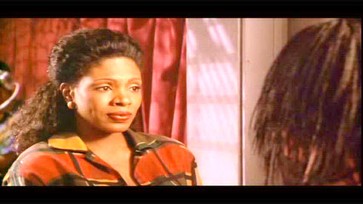 Florence was just looking out for Rita (Buena Vista)
Florence was just looking out for Rita (Buena Vista) Taking place in a low-income neighborhood, the film gave audiences a small and fairly realistic taste of what it’s like to be in an impoverished area. To supplement their parent’s meager income (or to take care of themselves), youth often split their time between work and school, which sometimes results in suffering grades, as we saw with rapper-artist, Sketch (Ron Johnson), who struggled to stay awake in class. Some view every hour in school as an hour of lost wages, so many end up dropping out (if not because they’re failing) to work full-time or get involved with organized crime or drug-dealing, expecting to maximize profit. Due to this and other factors, attitudes about the value of education are mixed. In an atmosphere where there’s a continual generational cycle of never being able to get ahead or excel, youth have no reason to think they’ll be the exception to the rule, no matter what talent or brains they have. Hoping, dreaming or having aspirations seems vain and silly. Why invest in a future if I’m not going to have much of one? Rita (Lauryn Hill) best expresses these sentiments to Sister Mary Robert (Wendy Makenna): “There are a lot of things I wanna do, but I ain't gonna get to do 'em…Have you walked around this neighborhood lately? I'm not exactly living in the land of opportunity…So, what's the point? Welcome to the real world, Sister.” Even when seeking an education is encouraged, institutions in low-income areas typically have little support and are underdeveloped, like the fictional St. Francis Academy, which nearly closed. People in these communities are written off and negatively-stigmatized, as those who live outside of it and hold the key to offering support or supply, are ignorant and insensitive to their experience.
One thing I loved about the student casting is that it was diverse (including Asians, whites, Latinos and blacks). It’s commonly thought that inner-city or low-income district schools consist only of blacks and Latinos, but poverty isn’t contingent of race; there are poor people in every racial group and their kids attend the same schools. Sister Act 2 even busted the myth that prissiness is reserved for the Paris Hiltons on the world, via the appearance-conscious airhead, Margaret.
Parenting
In the beginning, Sister Mary Clarence’s class loved shooting the breeze and wanted no part in structure or discipline, but they were eventually fine with it. Why? As Frankie put it, “Nobody has ever cared what we was good at except for Sister Mary Clarence and her homegirls up there.” Many child psychologists propose that on average, even if they remain unruly and never straighten up, kids secretly crave discipline, guidance and direction, partly because it’s a sign that someone cares about them. Affirmations from the adults and authority figures around them can help boost a child’s drive and confidence over the long-term and they’re less likely to give up on themselves and live passively.
Although Rita’s mother, Florence (Sheryl Lee Ralph), was portrayed as a villain of sorts, there wasn’t anything “evil” about her actions. Her character presented one of the primary conflicts and dilemmas in parenting: figuring out how to protect your child without hindering them. Concerned that Rita’s desire for a music career would lead to a life of struggling artistry, Florence practically barred music from her home. It was a bit extreme, but given Rita’s father died “still trying to make it,” she had immense fears (serving as a blaring exemplar of how fears and loss can have a stronghold over your life). In the end, Florence found out that it’s hard to keep your children from what they love.
Groupthink, Friendship & High School Behaviors That Go into Adulthood
The partial definition of “Groupthink” in psychology is when members of a group are so loyal and seek to avoid dissension so much that they cease to be an independent thinker and won’t consider viewpoints outside of their unit. Mary Clarence’s students were groupthink poster children. Under Rita’s dominant (and stubborn) personality and rule, the students “agreed” to remain defiant and try to force Mary Clarence into quitting. When she didn’t budge, they “agreed” to follow Rita’s charge out the door, until Sketch had the guts to deviate. Then, they all deviated together and “agreed” to stay. Poor Rita; her sense of self and personal power was all wrapped up in controlling her friends. The ultimate sign of groupthink was when Rita didn’t leave the class without making her pals feel guilty for their turn, saying “So much for friendship.” Rita rejoins them later and they collectively decide they aren’t ready for the all-state music competition, that they are ready and then aren’t again. It was great that this bunch was so loyal to one another and had a “team” mentality, but it was to a fault. Their dynamic was a great example of how your social circle (whether it include friends, partners or family members) can inadvertently-and insidiously- bring you down and distract you from things that can enhance your life. Your loved ones don’t even have to do something obviously unconstructive, like encourage you to drop out of school, to affect your mindset in a negative way. It could be as simple as them having an arrogant, cynical or superficial attitude about their own life. We have to be careful with the type of energy we allow in our intimate spaces.
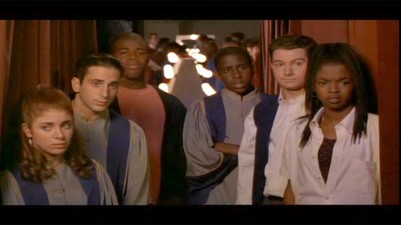 The kiddos got a little stage fright (Buena Vista)
The kiddos got a little stage fright (Buena Vista) Ambition, Talent and Purpose & Self Awareness
Rita Watson is a symbol of what it is to have a dream. We see her try, fail, get scared, get in her own way and succeed. We see her mentally endure the battle of logic vs. risk-the battle that so often causes people to discard a dream or put it on the back burner- where you try to make a reasonable decision between your passions and the reality of your life, resources and surroundings. The easily foreseen happy ending may make it seem that Rita had it well and that Sister Act 2 is a Cinderella tale, but it’s not really. Winning a choir competition is a very small victory and it took a little high water just to get there. What makes the small victories monumental is that each one is an indicator that you’re capable. If you get nothing else from the character of Rita, it’s to make your stubbornness work in your favor. Her bull-headed ways had her out of a class and feeling defeated, but once she flipped it, she had the courage to go to the all-state competition against her mother’s wishes and achieve something for herself.
Maybe Rita bumped heads with Mary Clarence because they were a lot alike. Similar to Rita, Delores/Mary Clarence was argumentative and mischievous in school and didn’t always require the best for herself in life (in the first film, she had to go undercover in the convent because she witnessed her married, mobster-boyfriend killing someone). Delores’ love for thrills and firecracker disposition got her in many a sticky spot, but once she used that energy (and her talents) in a productive, generous manner, she flourished, harnessed her strengths and became a headlining performer-which was always her objective. As the Reverend Mother (Maggie Smith) said, she was the “perfect example of how a sow’s ear can be turned into a silk purse” (and what Rita could be if she kept applying herself). Hmm…a sow’s ear… 1 more term I learned in the movie. A sow is a female pig. Anyhow, going from a poor childhood and a rough adult life to a Vegas star puts Delores on the “started from the bottom now we here” list. She’s a sign that reinvention is possible, regardless of your past.
Through Rita, Delores and all the other characters, it’s shown that yes, everyone has shortcomings, but everyone is also talented. Everyone is knowledgeable and smart about something. What you’re working with might not guarantee you notoriety or even a steady paycheck, but it could. In the least, you have something to offer or that makes you happy. Margaret might not have been the brightest crayon overall, but she knew about clothes and makeup- that’s a billion-dollar industry. Father Ignatius was squirrelly, but he was a brilliant math teacher. For those who feel they don’t know what their passions are or what they’re good at, take a cue from Mary Clarence: “lf when you wake up in the morning, you can’t think of nothing but writing-then you're a writer…If you wake up in the mornin' and you can't think of anything but singin' first-then you're supposed to be a singer, girl.”
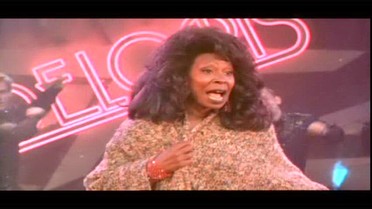 I. Am a Headliner: Delores in Vegas (Buena Vista)
I. Am a Headliner: Delores in Vegas (Buena Vista) Music
While I’m on music, did I mention Sister Act 2 had a bomb soundtrack?! Every single tune, melody and musical number was memorable; every one- and yes, I mean the background music too. I was all over that Tevin Campbell song (“Never Should’ve Let You Go”) playing while Florence was doing her client’s hair and slammed the door in Mary Clarence’s face, mm-hmm. I’ve been desperately trying to find a full and clear version of “It’s Me Again, God (Ladder to the Land),” the track playing when the group asks Rita why she quit the choir; it’s an original by Devin Kamin, A.K.A. Frankie. I wasn’t the only one intrigued by the song: there’s a Facebook group dedicated to it and the rest of the film’s music. I even named a feature on this blog after it.
Frankie himself is one of the many cross-culture/genre emblems in the movie. Discussions about the role and importance of hip-hop in mainstream music and the politics of race/ethnicity in the genre surround the character. When Frankie, who’s Caucasian, spits 1 of his first raps, Ahmal retorts “Man, can’t you come up with your own thing or must you continually come behind my people and steal our expressions? First jazz, then rock and roll, now rap. What you gonna try to take next, man?” Stripped of their ancestral identities and forbidden to indulge in cultural traditions throughout slavery, black Americans were in the position to try to form new norms and fashions unique to their community, including in media. Hip-hop is one of the innovations, stemming from the predominately black neighborhoods of New York. Therefore, the emergence of Caucasian rappers, particularly in the 90’s, was controversial. It’s fascinating that Sister Act 2 took time to note this chapter of the decade, in addition to the gender politics of hip-hop/rap. In a freestyle battle, Rita boldly confronts the competition and any gender-based underestimations: “You thought a female M.C. couldn't do it, but now check it-if the blues is what you choose, I'll kick it Count Basie style, but if bebop is what you rock, I'll kick the Monk or some Miles…won't grab no Phillies, my style is willing if you let me, or if I choose to 'cause women's lib said I don't have to, so think again before you test a sister, 'cause with my girls behind me we got lots of power, mister.” Whew, the formidable genius of Lauryn Hill (Yoyo, another 90’s female rapper, made a cameo as ‘Sondra’, who told Kathy Najimy she couldn’t answer any questions about sex education because she was a nun). Which reminds me: her beautiful “Eye is on the Sparrow” hymnal duet with Tanya Blount is probably the best ever period. Not only will it bring a tear to your eye (every time), but it’s vocally and musically (I live for the tender, yet dramatic strings) stunning (I beg you to listen to the album version, if you haven’t already). Blount’s voice is a rare best-of-all-worlds with rasp, richness, range and a dynamic happy medium of strong powerhouse with smooth softness. Hill conjures more or less of the same in various areas, making them the perfect duo. Hill’s cascading runs are sickeningly effortless; my dad always passes out on her “Joyful, Joyful” introduction.
Hill’s aforementioned freestyle and ability to beast at both rapping and singing continue the premise of blending alternate styles and ethos most would disapprove of (like in Hill’s rap, where she mentions jazz greats Count Basie, Thelonious Monk and Miles Davis). Merging spiritual and secular music has always been taboo, but Mary Clarence challenges this in both movies and gives proof that it can help broaden the reach of a positive faith message and close generation gaps (ex. using 60’s and Motown classics with hymns in the first movie, Janet Jackson and Naughty by Nature in the sequel). I loved that there were so many styles and eras of music effectively featured and melded; there are too many arguments about what genres and decades were the most useful and which are worthless. I have my favorites, but in my opinion, as I expand on in “StereoLove: The Birth of a Music Nerd,” is that all genres have value and all periods bring something to the table, for better or worse. Even though I critique and review music regularly on this site, what’s “real” or “good” music is truly subjective. Oh, yeah, speaking of different decades, the opening number, “The Greatest Medley Ever Told,” was honestly that, being an epic 60’s/70’s mash-up that told the story of the first plot, for anyone who didn’t see it. The film had an equally epic close with an awesome rendition and performance of “Ain’t No Mountain High Enough.” I dare you to name a motion picture with credits more entertaining than those of Sister Act 2. Whoopi was giving me so much diva life with that flawless wig, fly blue jacket and thigh-high boots. I was like “YAASSSSS, WHOOPI!” After the screen went to black and more credits rolled, you were still listening as you got one more dose of the “be self-sufficient, aware and focused” moral with the slamming “A Deeper Love” by Aretha Franklin (*sings* People, let me tell you...I work hard every day…I get up out of bed, I put on my clothes ‘cause I've got bills to pay! Let me stop, I’m going to end up type-singing that whole song). Sidebar: it’s sad that the 1970 Temptations hit covered by the nuns, “Ball of Confusion,” was relevant 23 years later in 1993 and still is in 2013.
Cast Updates & Fun Facts
I’ll start this section with the obvious cast member updates. Lauryn Hill, as many know, went on to become hip-hop royalty (and an impactful female MC) with Wyclef Jean and Pras as the Fugees. Her 1999 solo record, The Miseducation of Lauryn Hill was highly praised, racked up Grammy nods and is in the rap bible, safe to say. Overwhelmed and disillusioned by the music industry and fame, Hill stepped out of the spotlight and has been quite reclusive. She has 5 children with Bob Marley’s son, Rohan, and recently served 3 months in prison for tax evasion. Jennifer Love Hewitt was a 90’s teen dream after Sister Act 2, with lead film/TV roles, such as in the I Know What You Did Last Summer horror series and the popular prime-time drama, Party of Five (with fellow scream-queen, Neve Campbell). She saw more small-screen success as an adult with The Ghost Whisperer and The Client List. The holidays have been especially eventful for Hewitt: she gave birth to her first child and married her boyfriend, actor Brian Hallisay. J-Love, as I call her, was among my many media idols when I was young. She’s one of the people who inspired my interest in acting and why I applied to a fine arts high school. Ryan Toby was 1/3 of the R&B/hip-hop group, City High and married one of the members, Claudette Ortiz. The couple had 2 children and divorced after 3 years of marriage. City High released 1 album in 2001, which picked up a Grammy nomination. Toby currently works as a songwriter and producer and has partnered with Mary J. Blige and Brian McKnight, among others. Alanna Ubach (who portrayed Maria that didn’t know Mary had a lamb) starred in several comedies, including Meet the Fockers, The Brady Bunch Movie and Legally Blonde (she was Elle’s best friend!) and did voice-over work for 4 characters in the Oscar-winning Rango.
Remember when Mary Clarence was teaching her “wake up and pay attention” lesson and one of the students asked if she could ‘waken up’ the phrase by singing it? That was Valeria Andrews, the female lead (and co-writer) on the studio recording of “Wake Up & Pay Attention.” Andrews has music featured on other film and television soundtracks, like Moulin Rouge and Legally Blonde, and released a dance-pop album, Freshly Squeezed, on ITunes and Amazon in 2009. You can catch her as Wendy in 2003’s Just Married with Ashton Kutcher. This next update is going to surprise ya’ll: Ron Johnson was accused of rape by 2 film extras (1 from Sister Act 2), but was eventually acquitted of the charges. He was last known to be working as a youth mentor. Christian Fitzharris was a performer, co-writer and co-creator for Cirque du Soleil’s “Kooza” and has spent time shooting documentaries and doing improv and sketch comedy in Vegas. Wasting no time, record executives inked a deal with Tanya Blount and she released Natural Thing in 1994, but it underperformed. Since then, she authored a life-inspiration book, started a gospel duo with her brother (they have a record entitled Worth it All) and married Michael Trotter Jr., also a gospel artist. Did you love The Best Man or its sequel, The Best Man Holiday? Monica Calhoun was Morris Chestnut’s coveted bride in both and also had a central role in The Player’s Club. If you’re wondering where was Waldo, she told Mary Clarence that the nun’s performance at the nursing home was “cool for what it was, but it wasn’t all that.” She also got ripped by Mary Clarence for wearing her shades in class. Just like his Sister Act 2 featured song, Mr. Devin Kamin is under the radar and elusive, aside from bit parts on the TV teen drama My-So Called Life and the film Impact Point. I tried to find more info on the beautifully-handsome student piano-player who had no lines, but the only thing that came up was his name, which is Mehran Marcos Sedghi. You can view a “then and now” gallery of the cast below. There's more text after the gallery, FYI!
-Whoopi Goldberg’s daughter, Alex, was one of the classroom kids! She delivered the “your mama is so fat, she sat on a rainbow and skittles popped out” line.
-Lauryn Hill and David Kater (he’s in the “with the light of dear lord” trio during “Joyful, Joyful”) missed their high school graduations filming Sister Act 2, so the cast and crew hosted a ceremony for them. You can check it out here.
-Despite being authority figures in a religion-based school, Mr. Crisp (James Coburn) and Sister Mary Patrick (Kathy Najimy) both said “hell,” a perceived swear word.
-The "Chapman Choir of Orange County's Grand High School” that St. Francis competes against was comprised of students from Chapman University and Orange High School in California. There is no actual Grand High School. There are 3 St. Francis Academies in California.
Other Nuggets of Wisdom
--Help can come from an unlikely place, try not to judge a book by its cover and radicalism and disruption can be the solution. Mary Clarence’s unorthodox ways gave the traditional leadership at St. Francis the answer they were looking for and brought the best out of teens everyone had just about given up on.
--Be resourceful. In both movies, Mary Clarence makes the impossible happen by making detours around her obstacles (ex. finding a way to raise money to get the kids to the competition)
--Don’t take it for granted that everyone's had the same experience you’ve had and don’t make fun of those who don’t know what you do. Don’t be culturally egocentric. Maybe where Maria comes from, Mary had a dog, or a little kitty cat or a little bald-headed brother named Bart.
--“You don’t have to bite the doughnut to know it’s sweet”- Sister Mary Patrick (Kathy Najimy)
I used this quote anytime someone tried to convince me to do something stupid and learn the hard way. My deductive reasoning has gotten me far.
--“If you want to be somebody, if you want to go somewhere, you better wake up and pay attention, because the real world is out there and they don't care how hip you think you are or who you kick it with; It don't matter. If you don't have an education, you don't have anything and that's the truth, honey.”-Mary Clarence
--“Brothers try to wear the clothes, try to walk the walk and can't even understand the talk.”-Ahmal
--“If every time something scary comes up you decide to run, y'all are gonna be runnin' for the rest of your lives.”-Mary Clarence
Those involved with this film and its soundtrack clearly did a bang up impressionable job, but there’s something I’ll always wonder about. Why was Mr. Crisp so pressed?
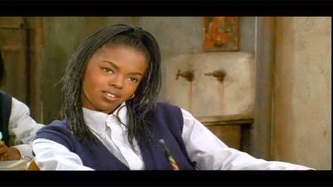
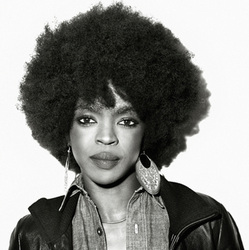
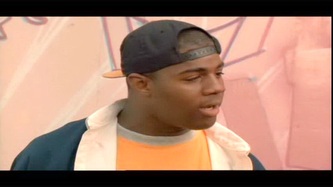
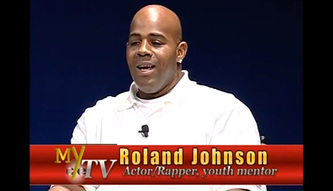
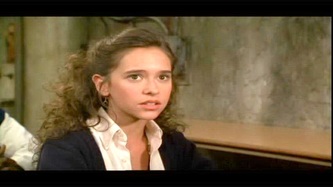

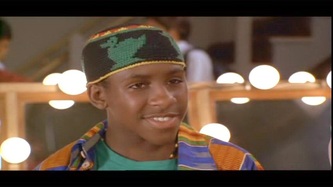

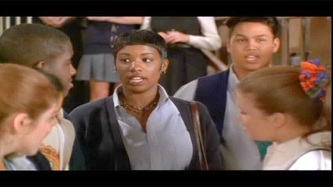
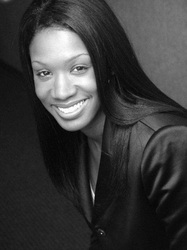
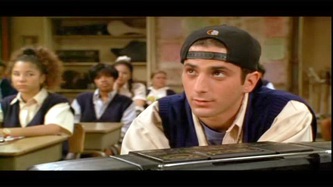
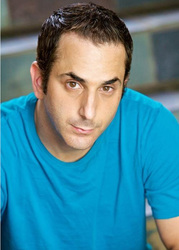
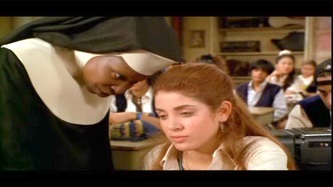
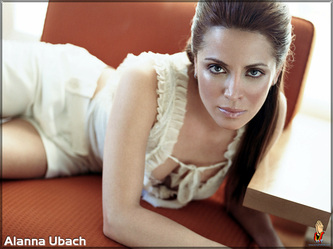
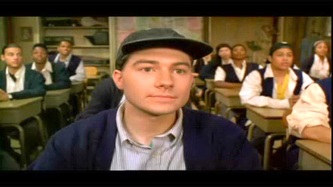

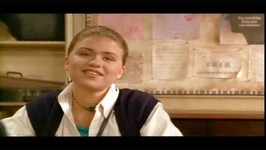

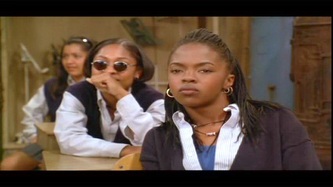
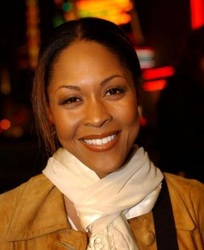
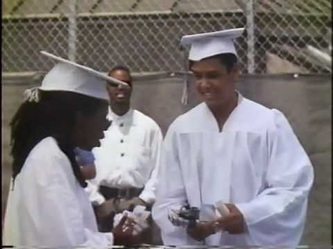
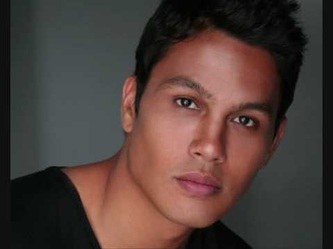
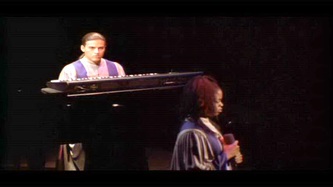

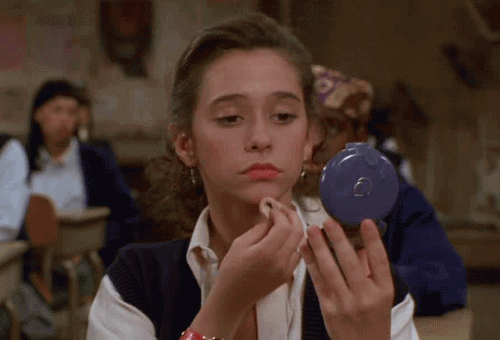


 RSS Feed
RSS Feed